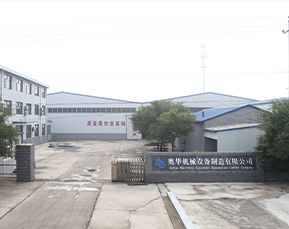 Afrikaans
Afrikaans  Albanian
Albanian  Amharic
Amharic  Arabic
Arabic  Armenian
Armenian  Azerbaijani
Azerbaijani  Basque
Basque  Belarusian
Belarusian  Bengali
Bengali  Bosnian
Bosnian  Bulgarian
Bulgarian  Catalan
Catalan  Cebuano
Cebuano  Corsican
Corsican  Croatian
Croatian  Czech
Czech  Danish
Danish  Dutch
Dutch  English
English  Esperanto
Esperanto  Estonian
Estonian  Finnish
Finnish  French
French  Frisian
Frisian  Galician
Galician  Georgian
Georgian  German
German  Greek
Greek  Gujarati
Gujarati  Haitian Creole
Haitian Creole  hausa
hausa  hawaiian
hawaiian  Hebrew
Hebrew  Hindi
Hindi  Miao
Miao  Hungarian
Hungarian  Icelandic
Icelandic  igbo
igbo  Indonesian
Indonesian  irish
irish  Italian
Italian  Japanese
Japanese  Javanese
Javanese  Kannada
Kannada  kazakh
kazakh  Khmer
Khmer  Rwandese
Rwandese  Korean
Korean  Kurdish
Kurdish  Kyrgyz
Kyrgyz  Lao
Lao  Latin
Latin  Latvian
Latvian  Lithuanian
Lithuanian  Luxembourgish
Luxembourgish  Macedonian
Macedonian  Malgashi
Malgashi  Malay
Malay  Malayalam
Malayalam  Maltese
Maltese  Maori
Maori  Marathi
Marathi  Mongolian
Mongolian  Myanmar
Myanmar  Nepali
Nepali  Norwegian
Norwegian  Norwegian
Norwegian  Occitan
Occitan  Pashto
Pashto  Persian
Persian  Polish
Polish  Portuguese
Portuguese  Punjabi
Punjabi  Romanian
Romanian  Russian
Russian  Samoan
Samoan  Scottish Gaelic
Scottish Gaelic  Serbian
Serbian  Sesotho
Sesotho  Shona
Shona  Sindhi
Sindhi  Sinhala
Sinhala  Slovak
Slovak  Slovenian
Slovenian  Somali
Somali  Spanish
Spanish  Sundanese
Sundanese  Swahili
Swahili  Swedish
Swedish  Tagalog
Tagalog  Tajik
Tajik  Tamil
Tamil  Tatar
Tatar  Telugu
Telugu  Thai
Thai  Turkish
Turkish  Turkmen
Turkmen  Ukrainian
Ukrainian  Urdu
Urdu  Uighur
Uighur  Uzbek
Uzbek  Vietnamese
Vietnamese  Welsh
Welsh  Bantu
Bantu  Yiddish
Yiddish  Yoruba
Yoruba  Zulu
Zulu troughing rolls
Understanding Troughing Rolls An Essential Component in Conveyor Systems
Troughing rolls are crucial components in conveyor systems widely utilized in various industries, including mining, agriculture, and manufacturing. These rolls play a pivotal role in enabling efficient material handling by providing the foundational support for the conveyor belt. Understanding their design, function, and benefits is essential for optimizing conveyor performance and ensuring operational efficiency.
What Are Troughing Rolls?
Troughing rolls consist of specially designed rollers that are positioned at an angle to create a concave shape. This unique design allows the conveyor belt to form a trough, which is essential for effectively transporting bulk materials. Typically, troughing rolls are available in several configurations, including 20-degree, 35-degree, and 45-degree angles, enabling flexibility based on the specific application and material characteristics.
The primary purpose of these rolls is to support the weight of the conveyor belt and the materials being transported. By creating a trough, they facilitate the containment of loose materials such as coal, gravel, or grain, preventing spillage and ensuring that the transported material remains securely positioned on the belt.
Design and Materials
Troughing rolls are designed to withstand the harsh conditions often encountered in industrial environments. They are typically constructed from durable materials such as steel or reinforced polymer, allowing them to resist corrosion, wear, and impact. The surface of the rolls may be coated or finished to enhance their lifespan and performance.
The design of troughing rolls also incorporates features that allow for easy maintenance and replacement. Many modern systems utilize sealed bearings and modular designs, which simplify the process of servicing. This is particularly important in environments where conveyor downtime can lead to significant productivity losses.
troughing rolls

Benefits of Troughing Rolls
1. Material Containment One of the most significant advantages of using troughing rolls is their ability to contain bulk materials. The troughing action minimizes spillage, reducing waste and increasing the overall efficiency of the material handling process.
2. Improved Load Support Troughing rolls distribute the weight of the material more evenly across the conveyor belt. This reduced pressure on specific points of the belt decreases the likelihood of wear and tear, extending the life of both the belt and the rolls.
3. Enhanced Stability The concave shape provided by troughing rolls increases the stability of the conveyor system, particularly when transporting uneven loads. This stability is crucial for safe and efficient operation, especially in dynamic or high-speed environments.
4. Versatility Troughing rolls can be adapted for various material types and handling applications. Their adjustable angles and configurations mean that they can be tailored to specific needs, whether for large-scale mining operations or smaller manufacturing setups.
Conclusion
Troughing rolls are an indispensable part of modern conveyor systems, offering numerous advantages that enhance operational efficiency and improve material handling processes. Their ability to contain materials, support loads, provide stability, and adapt to different applications makes them essential in various industries. As technology continues to evolve, advancements in the design and materials used for troughing rolls are likely to further improve their performance and durability, ensuring they remain a critical component of conveyor systems for years to come. Understanding the importance of these rolls not only helps in choosing the right equipment but also contributes to optimized operations and reduced costs in material handling.
-
Revolutionizing Conveyor Reliability with Advanced Rubber Lagging PulleysNewsJul.22,2025
-
Powering Precision and Durability with Expert Manufacturers of Conveyor ComponentsNewsJul.22,2025
-
Optimizing Conveyor Systems with Advanced Conveyor AccessoriesNewsJul.22,2025
-
Maximize Conveyor Efficiency with Quality Conveyor Idler PulleysNewsJul.22,2025
-
Future-Proof Your Conveyor System with High-Performance Polyurethane RollerNewsJul.22,2025
-
Driving Efficiency Forward with Quality Idlers and RollersNewsJul.22,2025





























